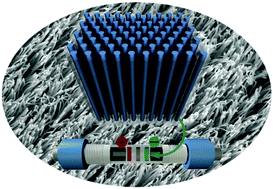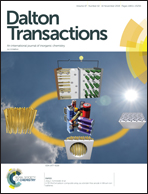A 3D MoOx/carbon composite array as a binder-free anode in lithium-ion batteries†
Abstract
Molybdenum(VI) oxide (MoO3) nanorod arrays were synthesized employing a template-assisted method. A polycarbonate membrane as a template was vacuum infiltrated with an aqueous solution of ammonium heptamolybdate. Template removal by oxygen plasma etching and calcination leads to the formation of highly crystalline 3D MoO3 nanorod arrays as a negative replica of the template. By applying sucrose as the carbon precursor, the mantling of the MoO3 nanorods with a thin carbon coating is obtained. Simultaneously, the direct and binder-free contact between the 3D MoOx nanorod arrays and the current collector resulting from the carbon coating could be achieved and leads to high capacities of up to 1376, 783, 856, 804 and 324 mA h g−1 for cycles 1, 2, 20, 50 and 200 as well as a coulombic efficiency of 99% for such 3D MoOx/C composite electrodes. The cycling performance of this 3D MoOx/C composite material is even more impressive, when comparing the determined experimental capacities with the theoretical capacities of graphite (372 mA h g−1) and MoO2 (838 mA h g−1). Additionally, MoO3 nanorod array electrodes without such an encapsulating carbon coating show an average capacity of only 175 mA h g−1 between cycles 20 and 200. Thus, the carbon coating of the MoO3 nanorod array can increase the electrochemical performance of a lithium-ion cell compared to conventional carbon additives when using MoO3 as the active anode material. This emphasizes the positive effects of the intimate and efficient electron transport and large surface area of the electrode material based on a minimal footprint architecture in Li-ion cells.



 Please wait while we load your content...
Please wait while we load your content...